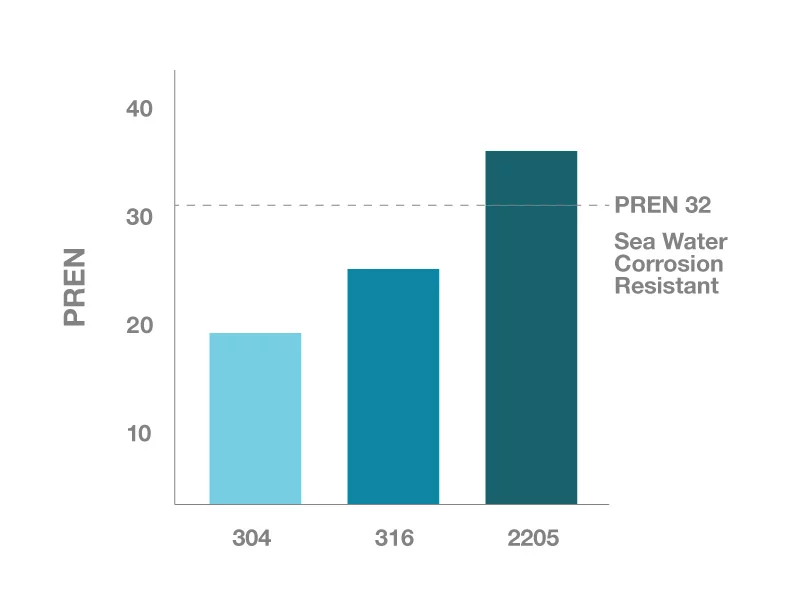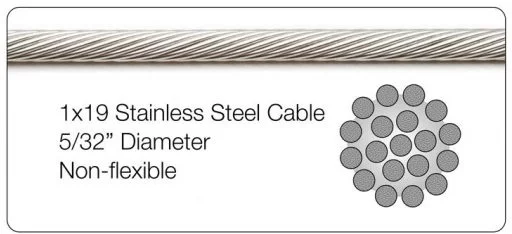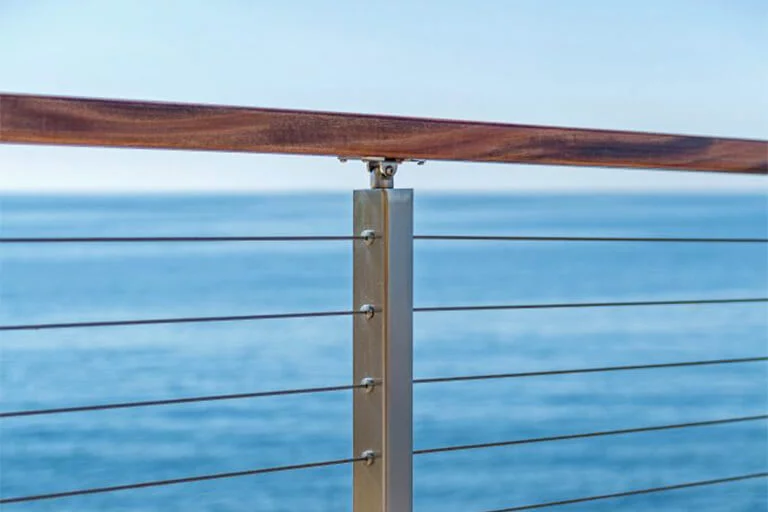Comparing Two Modern Railing Systems
Two infill systems—rod railing and cable railing—have emerged in the metal railing landscape. With sleek lines and hidden hardware, they’re shifting the landscape of modern railing and contemporary design. Both infills are made of durable stainless steel materials and use stainless steel componentry.
Despite these similarities, there are big differences between rod and cable railing when it comes to things: ease of installation, corrosion resistance, long-term maintenance, and curved applications.
Cable Installation
Many people are familiar with installing cable railing. Despite its simple and elegant appearance, it can take even experienced installers quite some time to install correctly. Most of the time taken up is in measuring and cutting the cable.
Since cable comes on spools, it always wants to curve back to a round shape, making it challenging to get straight measurements. It also can be tiring cutting the cable wire manually with cable cutters.
We’ve determined that an installer can usually count on about 1 hour of installation time per post for Cable Railing.
Rod installation
Fewer people are familiar with installing rod railing, but the mounting of the posts and handrails are all the same. The major difference between them is the time and effort in measuring and cutting the rods.
Rod railing does not arrive in spools. This means they are easy to measure and can be cut with an angle grinder and thin cutting wheel. Compared to cable railing, it’s a much more streamlined process
We’ve determined that an installer can usually count on about 30-40 minutes of installation time per post for Rod Railing.
Corrosion Resistance
While both cable and rod railing are made from stainless steel, they use different alloys. Cable railing uses a very common alloy in the architectural railing industry, 316L.
This alloy has been considered the standard in corrosion resistance for the last 30+ years in the architectural railing market. However, 316L doesn’t always cut it in the most corrosive environments.

Rod railing utilizes 2205 stainless steel, which is a newcomer to the architectural railing world. But although it’s new to railing, it has proven itself for decades in the extreme environments of deep sea oil drilling.
This duplex stainless steel has a Pitting Resistance Equivalency Number (PREN) of 34, above the score of 32 required for corrosion resistance in oceanside environments. 316L stainless, by comparison, only scores 25, making it vulnerable.
Maintenance & Care
Both cable railing and rod railing are a lower maintenance solution than other modern railing solutions like glass railing. Dirty spots won’t show prevalently on these slim railings. However, just because you can’t see any debris or dirty spots at first glance doesn’t mean you should commit to regular cleaning.
Cable railing is comprised of many different strands of cable wire (Viewrail cable uses 19 individual wires). This creates a finely woven appearance and, if not regularly cleaned and maintained, corrosive elements can enter become lodged within the cable strands which can cause the cable wires to slowly unravel and/or begin corrosion.
While cable railing is woven of many individual wires, rod railing is a single piece of tubular stainless steel, featuring a completely round profile. This gives no opportunity for elements to enter into the material and cause the same kind of unraveling. The bigger area to pay close attention to is making sure debris isn’t becoming lodged in between the rods and the posts, which can cause staining around the holes.
In either case, regular cleaning with a microfiber cloth and soapy water will keep your railing pristine.
Curved/Radius Applications
The final thing to evaluate when deciding between cable and rod railing is you’ll have any curved sections in your railing. Once tension is applied to cable railing, it will always travel in a straight line from one post to the next, meaning that you won’t be able to create a true curve or radius.
Rod railing, because it is made of a tube, will bend slightly to follow curves that are as tight as an 8’ radius. This makes it ideal for balconies that have a curved overlook or other radius applications.
Final Thoughts
Now that we’ve gone through the big differences between rod and cable railing, you should be well on your way to making an informed decision on which is best for your project. You can review the chart below to remind you of the similarities and differences between these two railings.
| Rod Railing | Cable Railing | |
|---|---|---|
| Common in Modern/Contemporary Design | Yes | Yes |
| Thickness of Infill | 1/4″ | 5/32″ |
| Material Type | 2205 Stainless Steel | 316L |
| Time to Install | 30-40 minutes/post | 1 hour/post |
| Maintenance & Care Necessary | Regular Washing | Regular Washing |
| Hidden Hardware | Yes | Yes |
| Radius/Curved Application | Will Curve | Only Runs in Straight Lines |

